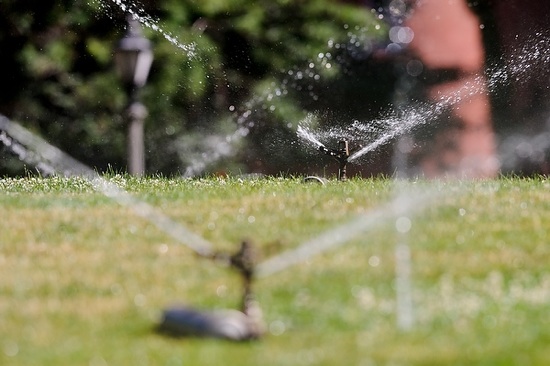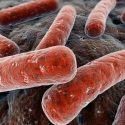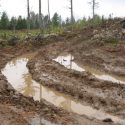Growing a green lawn means finding grasses that need less water

Researcher Doug Soldat is assessing the drought tolerance of Wisconsin turfgrasses, aiming to reduce the need for watering parched lawns with potable water.
Photo: Jeff Miller
You have to give Doug Soldat credit. He picked the right year to begin a study on the drought tolerance of Wisconsin turfgrasses.
It’s not that he saw it coming.
In fact, the UW–Madison and UW-Extension soil scientist and turfgrass specialist went to considerable trouble to build a system that would let him induce his own drought-a 2,500-square-foot vinyl canopy that rolls on tracks to cover his plots at the first hint of rain. But the “rain-out shelter” sat idle for much of the summer. It was finally rolled into place to make sure that the test plots didn’t benefit from the late July rains that brought some color back to most Madison-area lawns.
Drought or no drought, this research is much needed, Soldat says, because there are more critical uses for Wisconsin’s drinking water than irrigating grass. He estimates that watering of home lawns accounts for about two-thirds of the 7 billion gallons of potable water used for landscape irrigation in the U.S. every day. Adding to the problem: We all turn on our sprinklers at the same time.
“The issue is reducing peak demand in the municipal areas. As we put in more lawns and irrigation systems, we’re seeing higher peak demand, which means we have to build more wells and water towers,” he says.
Irrigating with non-potable water is part of the solution, he says, and he’s looking into that as well.
Downspouts at the UW’s O.J. Noer Turfgrass Research Facility can be connected to a 4,000-gallon underground reservoir that can see the center’s large front lawn through a pretty good dry spell.
“As we put in more lawns and irrigation systems, we’re seeing higher peak demand, which means we have to build more wells and water towers.”
Doug Soldat
Soldat is also developing guidelines for irrigating lawns with treated wastewater. That’s common in arid regions, and he suspects it will work even better in Wisconsin, where there’s more rainfall to flush the soil of any salts the wastewater carries.
But one of the simplest solutions, he says, is to plant grass varieties that need less irrigation. CALS turfgrass specialists have included drought-tolerant grasses in their variety trials at O.J. Noer for about a decade. One of the most promising, he says, is tall fescue.
“It has about the same water needs as Kentucky bluegrass-the most commonly planted grass in Wisconsin-but its deeper roots give it access to more water in the soil. It has double or triple the root mass of Kentucky bluegrass, so you could potentially double or triple the amount of time before you need to irrigate.”
But Kentucky bluegrass has its own survival mechanism: the ability to go dormant during a long dry spell. In a summer like we’re having this year, that may be more important.
“Kentucky bluegrass may be better than tall fescue in a severe drought,” he says. “Tall fescue will stay green longer, but once it turns brown it might not come back.”
The study he began this summer is looking at how the two will match up during a dry spell. He’s growing several cultivars of each, along with a couple of other species, under severe drought conditions. He’ll study that set of grasses for two years, then evaluate a different set of grasses for the following two years.
The drought tolerance work is part of a larger effort by the UW turf management team to provide information on reduced-impact lawn-care strategies that work under Wisconsin growing conditions. Their ideas are available in a new publication, “Organic and Reduced-Risk Lawn Care,” available at county UW-Extension offices or online here.



